By: Amy Freeman
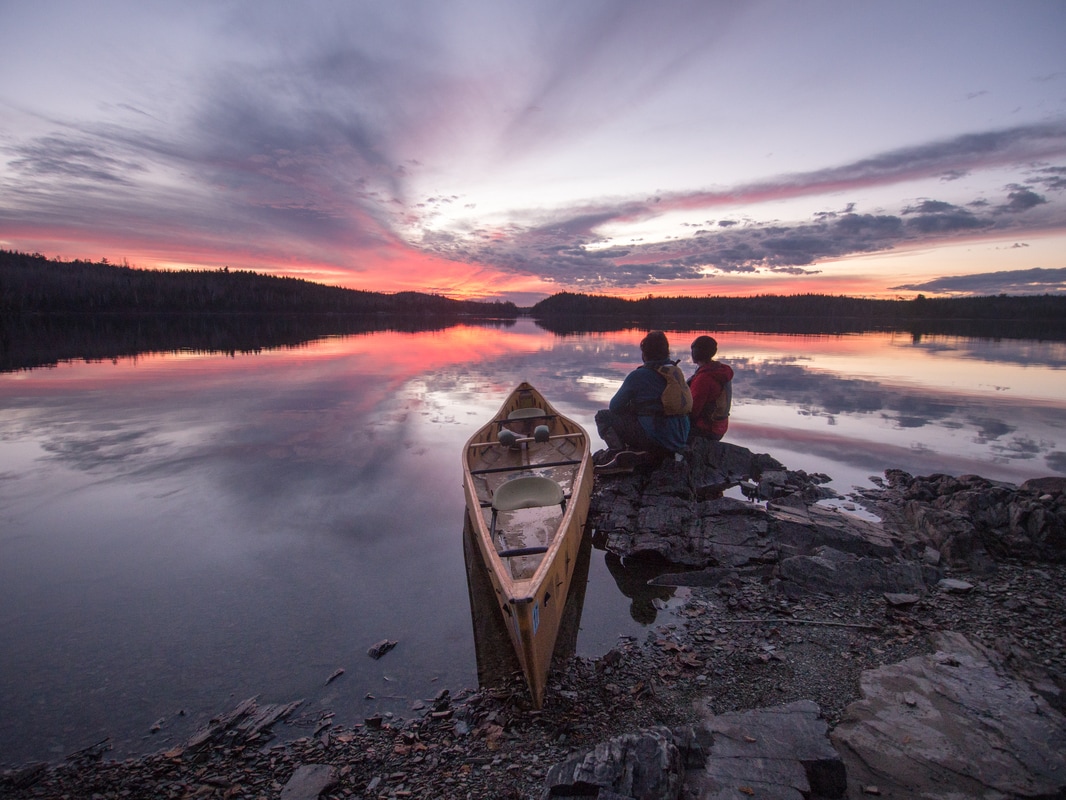
Watching sunset on Ensign Lake. Photo by Dave Freeman
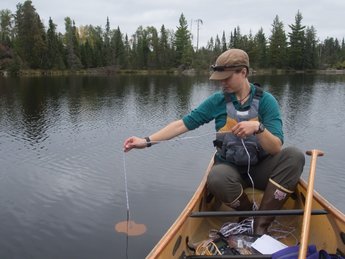 Amy Freeman uses a secchi disc to measure water clarity on one of the more than 500 bodies of water the Freemans visited during their Year in the Wilderness. Photo by Dave Freeman
Amy Freeman uses a secchi disc to measure water clarity on one of the more than 500 bodies of water the Freemans visited during their Year in the Wilderness. Photo by Dave Freeman
My husband, Dave, and I just spent a whole year in Minnesota’s Boundary Waters Canoe Area Wilderness to raise awareness about the threats of proposed sulfide-ore copper mining within its watershed. For those of you who are unfamiliar, the BWCAW is a 1.1 million acre federally designated Wilderness Area in northern Minnesota. That’s Wilderness with a capital “W.” The region is a maze of lakes, rivers, wetlands and roadless forests—a paddler’s paradise.
It is also the most popular Wilderness Area in the country, receiving about a quarter of a million visitors annually. We teamed up with the Campaign to Save the Boundary Waters to keep the beloved BWCAW on peoples’ minds for an entire year, sharing the experience through photos, blog posts, articles and social media. We were thrilled to have the chance to collect water samples for Adventure Scientist’s Global Microplastics Initiative along the way—adding samples from wilderness lakes along the Minnesota, Ontario border to their database. We also gathered water quality data for the Minnesota Pollution Control Agency.
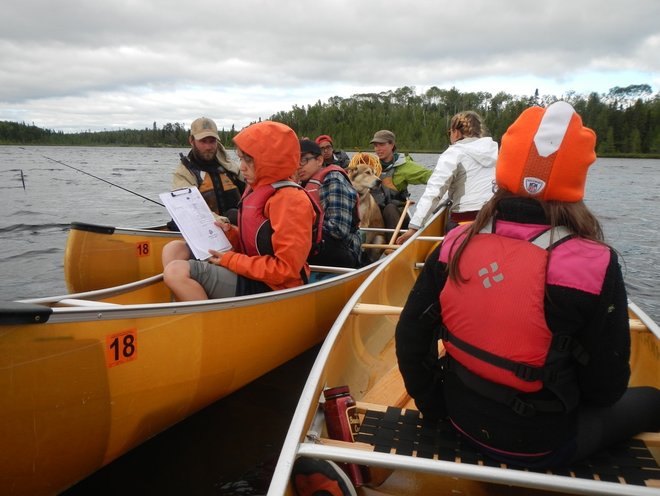
Students from Rauner College Prep in Chicago record a variety of water quality measurements in the middle of Poet Lake. Photo by John Dichiara
Along the way, we educated young people about the Boundary Waters through our organization,
The Wilderness Classroom. At one point, we rafted canoes with a group of high school students from Rauner College Prep in Chicago who assisted us in collecting a microplastic water sample and recording a variety of water quality measurements in the middle of Poet Lake. This rarely visited lake in the middle of the Boundary Waters Canoe Area Wilderness has no trails to it. The group had to bushwhack through alders and bog to reach Poet Lake in the middle of their five day wilderness canoe trip to resupply us and collect water samples. It is possible that these students were the first people to collect basic water quality data on Poet Lake.
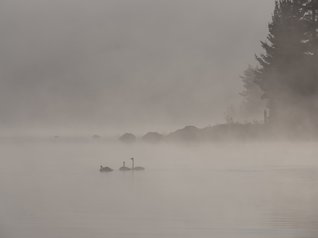 Trumpeter Swans float in the fog near wild rice beds on Nina Moose Lake by Dave Freeman
Trumpeter Swans float in the fog near wild rice beds on Nina Moose Lake by Dave Freeman
Our year lasted from September 2015 to September 2016 and in that time great strides were taken to protect Minnesota’s crown jewel from sulfide-ore copper mining. The federal government recently determined it is not going to renew two key mineral leases on the edge of the Wilderness, currently held by Twin Metals Mining. These leases are more than 50 years old and have never undergone any environmental review. Deputy Undersecretary of the U.S. Department of Agriculture Leslie Jones summed it up best, “Not this mine, not in this place, not next to this wilderness.”
Along with the decision to not renew the Twin Metal’s leases, the U.S. Forest Service and the BLM announced the beginning of a comprehensive environmental review to determine whether national forest lands in the watershed of the BWCAW are the wrong place for sulfide-ore copper mining and whether national forest lands adjacent to the Wilderness Area should be removed from the federal mining program altogether. During a 90-day period (through April 12), citizen input is being accepted. If you would like to submit a comment and learn more about the issue, I encourage you to visit
SavetheBoundaryWaters.org.
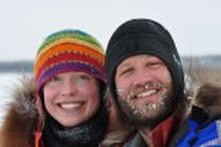
Dave and Amy Freeman have crossed both North and South America on human-powered expeditions and were named Adventurers of the Year in 2014 by National Geographic for their education focused expeditions. They have traveled over 30,000 miles by canoe, kayak, and dogsled across of some of the world’s wildest waterways. Learn more about them and the
Wilderness Classroom.
 Amy Freeman uses a secchi disc to measure water clarity on one of the more than 500 bodies of water the Freemans visited during their Year in the Wilderness. Photo by Dave Freeman
Amy Freeman uses a secchi disc to measure water clarity on one of the more than 500 bodies of water the Freemans visited during their Year in the Wilderness. Photo by Dave Freeman  Trumpeter Swans float in the fog near wild rice beds on Nina Moose Lake by Dave Freeman
Trumpeter Swans float in the fog near wild rice beds on Nina Moose Lake by Dave Freeman 


